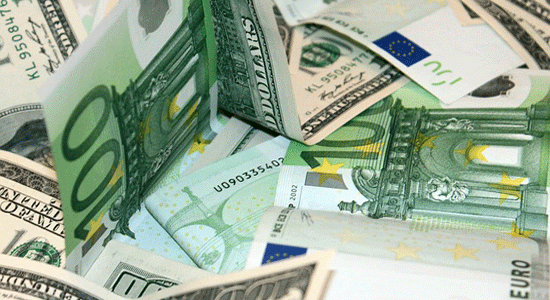The draft French budget for 2018 was presented to the French Parliament in September 2017. The budget is assessed by parliament before being approved at the end of the year, so further changes are possible.
The main measure affecting expatriates in France concerning Capital Gains Tax on Investment income is summarised below.
Tax on Investment Income – prélèvement forfaitaire unique
With the objective of simplification of rates and regimes, a single flat rate tax (prélèvement forfaitaire unique) of 30% will apply on all savings and investment income and gains – interest, dividends and shares – from January 2018. The tax comprises income tax at the rate of 12.8% and social charges of 17.2%.
Note: this new tax does not apply to capital gains on sale of property or rental income.
Social Tax increases will apply: from 15.5% to 17.2%.
Example: You are tax resident in France and hold Unit Trusts and ISA’s to the value of £100,000 in the UK, and they have grown at 4% (£4000) in the last French tax year. This whole gain (if withdrawn or not) has to be declared on your annual French tax return and will be taxed at 30% (£1200).
What is tax efficient for you in France and how does the new tax now affect these tax-efficient structures?
The Bank savings account Livret A remains tax free. The maximum investment currently is €22,950 per person (which can only be exceeded by interest received) and the current interest rate is 0.75%.
The Assurance Vie Structure
Most investments build up entirely tax-free inside the Assurance Vie wrapper, taxation is only deducted when you make withdrawals AND THEN ONLY on the growth element of your withdrawal.
Example: You are tax resident in France and hold an Assurance Vie valued at £100,000 and it has grown at 4% (£4000) in the last French tax year. If the growth is left in the policy, then it is not taxed. If you withdraw the £4000, then only the growth element of the withdrawal is taxable. In this example the growth is 4%, so only 4% (the growth element) of the withdrawal is taxable, i.e. only £160 (4% of £4000) is taxable, and the remainder is considered to be return of capital and comes to you in effect “tax-free”
The growth element of any withdrawal will be taxed at the following rates on all withdrawals after the 27/09/17:
During the first 8 years: 12.8% (+17.2% social charges) = 30% total
Note: If you elect to have the tax deducted at source, at the time of withdrawal, the insurer will automatically deduct a tax “payment on account” (prélèvement forfaitaire obligatoire) on the gain element of your withdrawal and pay the French Fiscal authorities direct. You will then receive the withdrawal amount net of tax paid.
If you elect not to have tax deducted at source, when completing your annual tax return you can treat the “gain” as normal income (Impôt sur le Revenu – IR) which is then added on top of your existing salary/pension/etc and therefore taxed at your top band rate. If when you add all your income including the gains from your Assurance Vie and your household tax rate is then less than the 30% CGT rate, then this may be a better option for you.
After the first 8 years of the policy
You receive an annual tax-free “gains” allowance of €9200 per annum (for a couple with a joint policy) or €4600 per annum (for a policy in a single name).
Above these tax free allowances, the growth element of any withdrawal is then taxed at the following rates:
If the outstanding capital is less than €150,000 (€300,000 for a joint policy) the tax payable on the growth element of a withdrawal is:
7.5% + 17.2% Social Tax (24.7% total)
If the outstanding capital is more than €150,000 (€300,000 for a joint policy) the tax payable on the growth element of a withdrawal is:
12.8% + 17.2% Social Tax (30.0% total)
Example of tax savings to be made in an Assurance Vie
You are tax resident in France and started an Assurance Vie with £100,000 five years ago, and it has grown by 20% (£20,000) since the start and is now valued at £120,000. You decide to withdraw this £20,000 growth and update your car. You elected to have the tax deducted at source on withdrawals, and we now know the tax due is only on the growth element of your withdrawal.
In this example the policy has grown by 20% therefore 20% only of your withdrawal is taxable i.e. tax is due on only 20% of £20,000 meaning only £4,000 is taxable (20% of £20,000). The remainder is considered return of capital and in effect comes to you “tax-free”.
Tax payable on this £4000 is 30%; therefore tax payable is £1,200 only. The Insurance Company will therefore send £1,200 to the French Fiscal authorities and you will receive a net £18,800.
Paying £1,200 tax on £20,000 growth is an effective tax rate of just 6.0%
If this same example happened outside an Assurance Vie structure then the full £20,000 growth would have been taxed at 30%, meaning you then paid £6,000 tax, instead of £1,200 only, inside an Assurance Vie Structure.
By Paul Flintham, Beacon Global Wealth Management
For expert advice contact Jennie Poate: jennie (@) bgwealthmanagement.net or via the Beacon Global Wealth website
The financial advisers trading under Beacon Wealth Management are members of Nexus Global (IFA Network). Nexus Global is a division within Blacktower Financial Management (International) Limited (BFMI). All approved individual members of Nexus Global are Appointed Representatives of BFMI. BFMI is licensed and regulated by the Gibraltar Financial Services Commission and bound by their rules under licence number FSC00805B.
And the information on this page is intended as an introduction only and is not designed to offer solutions or advice. Beacon Global Wealth Management can accept no responsibility whatsoever for losses incurred by acting on the information on this page.










